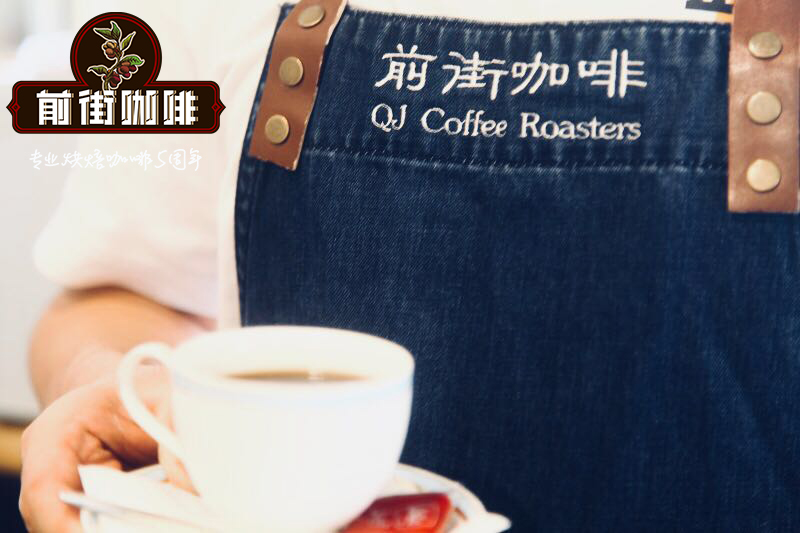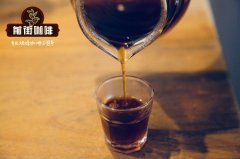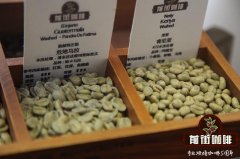How to treat coffee beans with cold water in Brazil? how to make coffee by hand? how to make Brazilian coffee with ice?

Professional coffee knowledge exchange more coffee bean information please follow the coffee workshop (Wechat official account cafe_style)
With regard to Brazilian cold water treated coffee:
Country of origin: Brazil
Producing area: Parana
Manor: Fazenda California
Altitude: 800 m
Bean seed: Yellow Catuai
Treatment: cold water fermentation
The red wine-like taste is the main feature of the beans. The beans produced by the manor owner with all-red fruit late picking and cold water soaking are contrary to the world's sense of sniffing at low-altitude beans. As an innovative method of micro-batch custom beans, it presents the flavor of strawberries, blueberries, cream and wine. The sour and sweet berry wine comes from the combination of citric acid, gluconic acid and fructose. Lively and rich acid, slightly astringent tannins, thick but smooth mouth touch, all let people mistake it for wine to drink.
Introduction to the manor: Fazenda California
Founded in the 19th century, California Manor is located in Jakarezu, Parana, Brazil, at 23 degrees south and an average elevation of 600m. As the largest coffee bean producer in the 19th century, California Manor has rich planting experience, advanced field management technology, traditional and innovative processing technology. The California manor management team has a doctor of coffee cultivation and two Q-Grader.
California Manor was certified by UTZ and Rainforest Alliance in 2004. The main planting variety is Catuai,Mundo Novo,Obata, which uses a variety of treatment processes, such as sun, half-sun, double fermentation, washing, honey treatment and so on. Brazil COE international bidding beans were selected in 2010 and 2015.
Qianjie cooking parameters are suggested:
How to make Brazilian coffee [cold water treatment] well?
Qianjie Coffee hand reference: weigh 15g [cold water treatment] coffee powder, pour into the grinder for medium grinding, the finished particles are slightly thicker than salt, we use BG bean grinder to scale 6A (standard sieve pass rate 50%), water temperature 88 degrees, kono/kalita filter cup extraction, recommended powder / water ratio around 1:14.
The hot water in the hand flushing pot draws a circle clockwise with the center of the filter cup. Start the time when brewing, brew the coffee to 30g in 15 seconds, then stop the water injection, and when the time is up to 1 minute, the second water injection. The second water injection is the same as before, draw a circle clockwise with the center of the filter cup, and the water flow should not rush to the place where the coffee powder is connected with the filter paper, so as not to produce channel effect.
Coffee powder to the outermost circle to set aside a circle, and then another circle to the middle, 2 minutes 10 seconds, to the coffee to 210g, brewing coffee is finished.
| | Japanese ice hand flushing [cold water treatment] |
Qianjie coffee ice hand flushing [cold water treatment] reference:
Brazilian coffee [cold water treatment], medium and deep roasting, BG bean grinder scale 5R (standard sieve pass rate 60%)
20 grams of powder, 150 grams of ice, 150 grams of hot water. The water temperature is 88 ℃ higher than the recommended normal hand flush, then 1 ℃ higher, the normal grinding small Fuji 3.5 scale, the ice hand flushing is slightly smaller than half a grid-small Fuji 3 scale, the recommended powder (water + ice) ratio is 1:15.
The amount of steaming water is 40 grams and the steaming time is 30 seconds.
Water injection by stages, 60 grams of water in the first section and 40 grams of water in the second section. Use a thin but high water injection column and stir hard to make the coffee powder fully tumble, but be careful that the water level is not too high and do not rush to the edge of the filter paper.
The whole extraction time is about two and a half minutes (close to the normal extraction time of 20 grams of powder).
END
Important Notice :
前街咖啡 FrontStreet Coffee has moved to new addredd:
FrontStreet Coffee Address: 315,Donghua East Road,GuangZhou
Tel:020 38364473
- Prev

How about Brazilian Giselle Coffee? how about Diamond Chocolate Coffee? is it good?
Professional coffee knowledge exchange more coffee bean information please follow the coffee workshop (Wechat official account cafe_style) Giselle Brazilian Diamond Chocolate Origin: Santo Antonio Variety: yellow Catucai treatment: Natural non-washing type has won the champion and overall champion in the Brazilian Coe tanning group with high scores sensory description: nuts, yellow sugar, low acid, high sweetness
- Next

Brazil St. Chris Natural Sun Coffee beans how to make sour Little _ Brazilian Coffee how to make by hand
Professional coffee knowledge exchange more coffee bean information please follow the coffee workshop (Wechat official account cafe_style) Brazil Coffee Manor-San Lix Manor is located in Silado South Meeks region, this is Brazil's famous area of fertile soil suitable for coffee cultivation, the manor began to turn into an organic manor in 2010, the cooperative established in the Hula volcanic area has a total of 84 small coffee farmers, derived from 5.
Related
- Detailed explanation of Jadeite planting Land in Panamanian Jadeite Manor introduction to the grading system of Jadeite competitive bidding, Red bid, Green bid and Rose Summer
- Story of Coffee planting in Brenka region of Costa Rica Stonehenge Manor anaerobic heavy honey treatment of flavor mouth
- What's on the barrel of Blue Mountain Coffee beans?
- Can American coffee also pull flowers? How to use hot American style to pull out a good-looking pattern?
- Can you make a cold extract with coffee beans? What is the right proportion for cold-extracted coffee formula?
- Indonesian PWN Gold Mandrine Coffee Origin Features Flavor How to Chong? Mandolin coffee is American.
- A brief introduction to the flavor characteristics of Brazilian yellow bourbon coffee beans
- What is the effect of different water quality on the flavor of cold-extracted coffee? What kind of water is best for brewing coffee?
- Why do you think of Rose Summer whenever you mention Panamanian coffee?
- Introduction to the characteristics of authentic blue mountain coffee bean producing areas? What is the CIB Coffee Authority in Jamaica?

